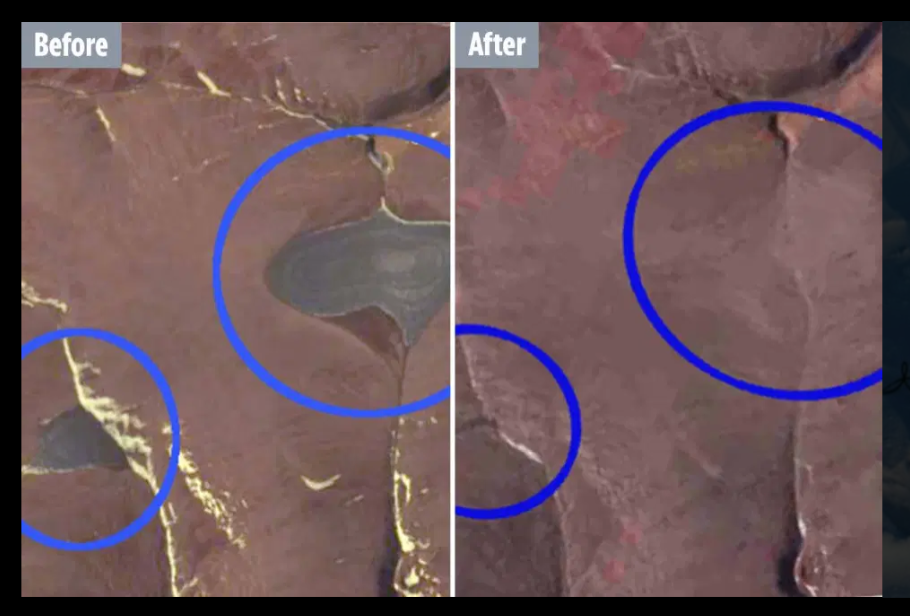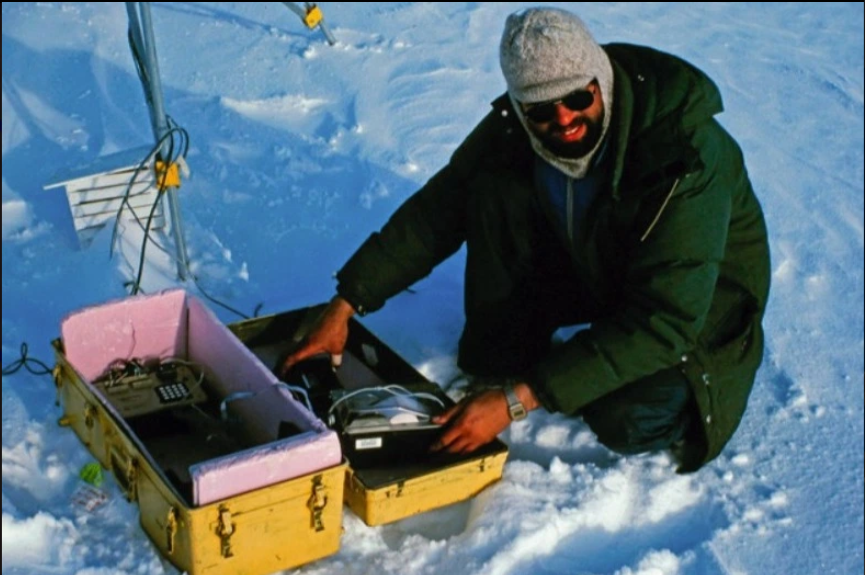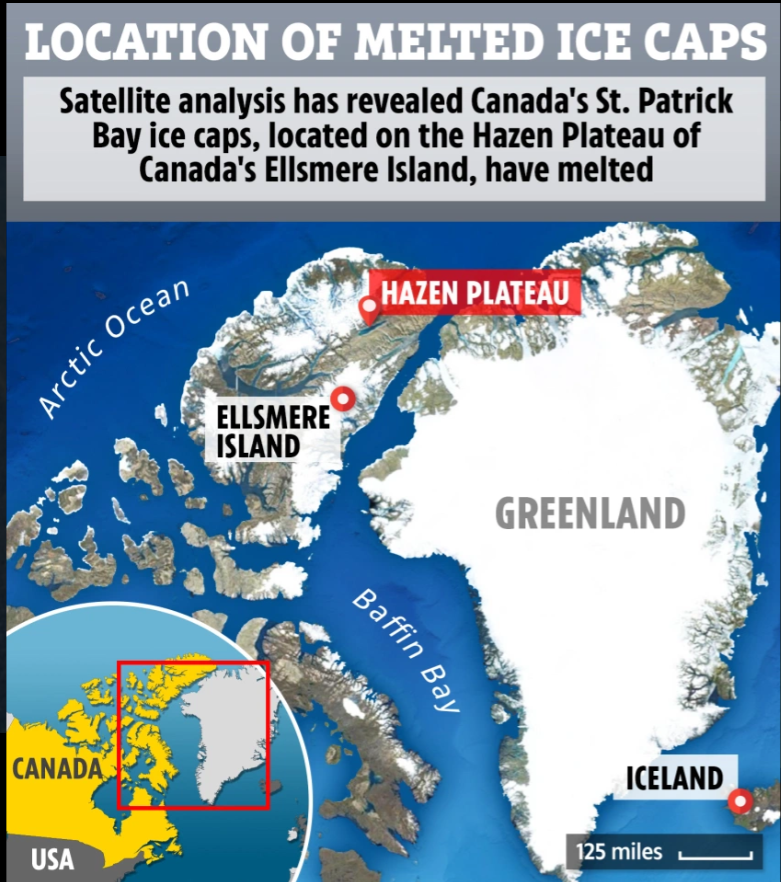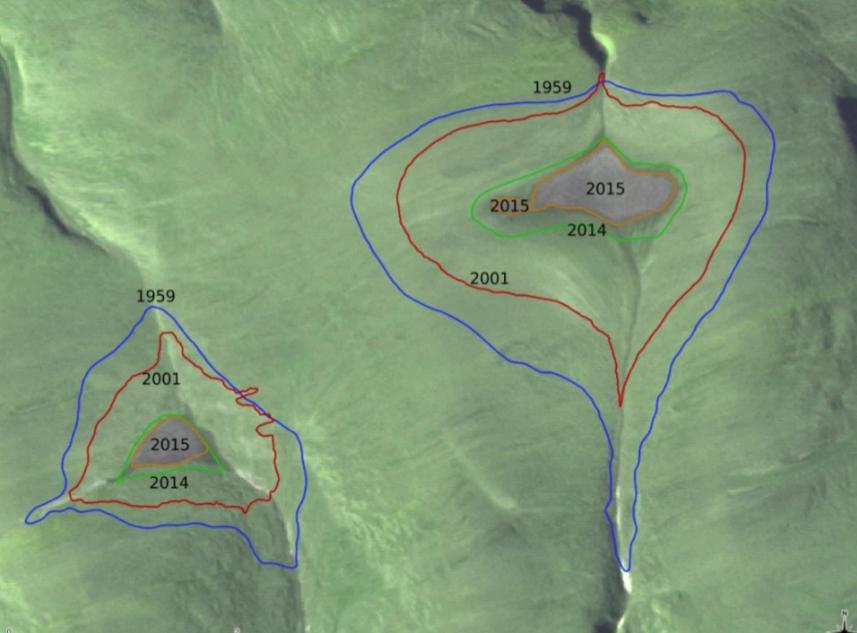SATELLITE analysis has revealed two ice caps in the Arctic have completely disappeared.
They’re victims of human-caused warming, according to the National Snow and Ice Data Center.

This image was taken via a Nasa satellite in 2015, the right was taken in 2020 and shows the ice caps have vanished Credit: NSIDC
Mark Serreze, director of NSIDC, researched Canada’s St. Patrick Bay ice caps in the 1980s when he was a student.
They used to be located on the Hazen Plateau of Canada’s Ellsmere Island.
Now all Serreze has left of them is a few photos.
The disappearance of the ice caps was confirmed by Nasa’s Terra satellite.

Mark Serreze studied the ice caps in the 1980s Credit: NSIDC

Discover reported on Serreze’s shock at how quickly they vanished.
Unfortunately, him an his colleagues were right.
A post on the NSIDC website explains: “In 2017, scientists compared ASTER satellite data from July 2015 to vertical aerial photographs taken in August of 1959.
“They found that between 1959 and 2015, the ice caps had been reduced to only five percent of their former area, and shrank noticeably between 2014 and 2015 in response to the especially warm summer in 2015.
“The ice caps are absent from ASTER images taken on July 14, 2020.”
In 1959 the ice caps measured in at 7.48 square km (2.8 square miles) and 2.93 square km (1.1 square miles) respectively.
That means the larger of the two was just over two times as big as Central Park in New York.
Serreze told Discovery: “It was like watching a sick friend slowly waste away from some awful disease.
“I knew the end was coming, but still couldn’t be completely prepared for it.”
The ice caps at St. Patrick Bay were part of a the Hazen Plateau were believed to date back to the Little Ice Age.
The Little Ice Age was a period of cooling between the 14th and 19th centuries.
The ice caps that remain in the area are melting less quickly but experts still think they are doomed.
Serreze told Discovery: “Climate change is very, very real, and as long predicted, the Arctic is leading the way.
“We are geoengineering our planet, and we don’t seem to want to accept that we’re headed for a very different world.”
Discover reported on Serreze’s shock at how quickly they vanished.
He said: “When I first visited those ice caps, they seemed like such a permanent fixture of the landscape.
“To watch them die in less than 40 years just blows me away.”
He first visited the ice caps in 1982 but published a paper in 2017 predicting they would disappear in less than five years.

The shrinkage was documented in a 2017 study Credit: NSIDC
Unfortunately, him an his colleagues were right.
A post on the NSIDC website explains: “In 2017, scientists compared ASTER satellite data from July 2015 to vertical aerial photographs taken in August of 1959.
“They found that between 1959 and 2015, the ice caps had been reduced to only five percent of their former area, and shrank noticeably between 2014 and 2015 in response to the especially warm summer in 2015.
“The ice caps are absent from ASTER images taken on July 14, 2020.”
In 1959 the ice caps measured in at 7.48 square km (2.8 square miles) and 2.93 square km (1.1 square miles) respectively.
That means the larger of the two was just over two times as big as Central Park in New York.
Serreze told Discovery: “It was like watching a sick friend slowly waste away from some awful disease.
“I knew the end was coming, but still couldn’t be completely prepared for it.”
The ice caps at St. Patrick Bay were part of a the Hazen Plateau were believed to date back to the Little Ice Age.
The Little Ice Age was a period of cooling between the 14th and 19th centuries.
The ice caps that remain in the area are melting less quickly but experts still think they are doomed.
Serreze told Discovery: “Climate change is very, very real, and as long predicted, the Arctic is leading the way.
“We are geoengineering our planet, and we don’t seem to want to accept that we’re headed for a very different world.”
Climate change explained
Here are the basic facts…
- Scientists have lots of evidence to show that the Earth’s climate is rapidly changing due to human activity
- Climate change will result in problems like global warming, greater risk of flooding, droughts and regular heatwaves
- Each of the last three decades have been hotter than the previous one and 17 of the 18 warmest years on record have happened during the 21stcentury
- The Earth only needs to increase by a few degrees for it to spell disaster
- The oceans are already warming, polar ice and glaciers are melting, sea levels are rising and we’re seeing more extreme weather events
- In 2015, almost all of the world’s nations signed a deal called the Paris Agreement which set out ways in which they could tackle climate change and try to keep temperatures below 2C
Article Credit: the-sun
